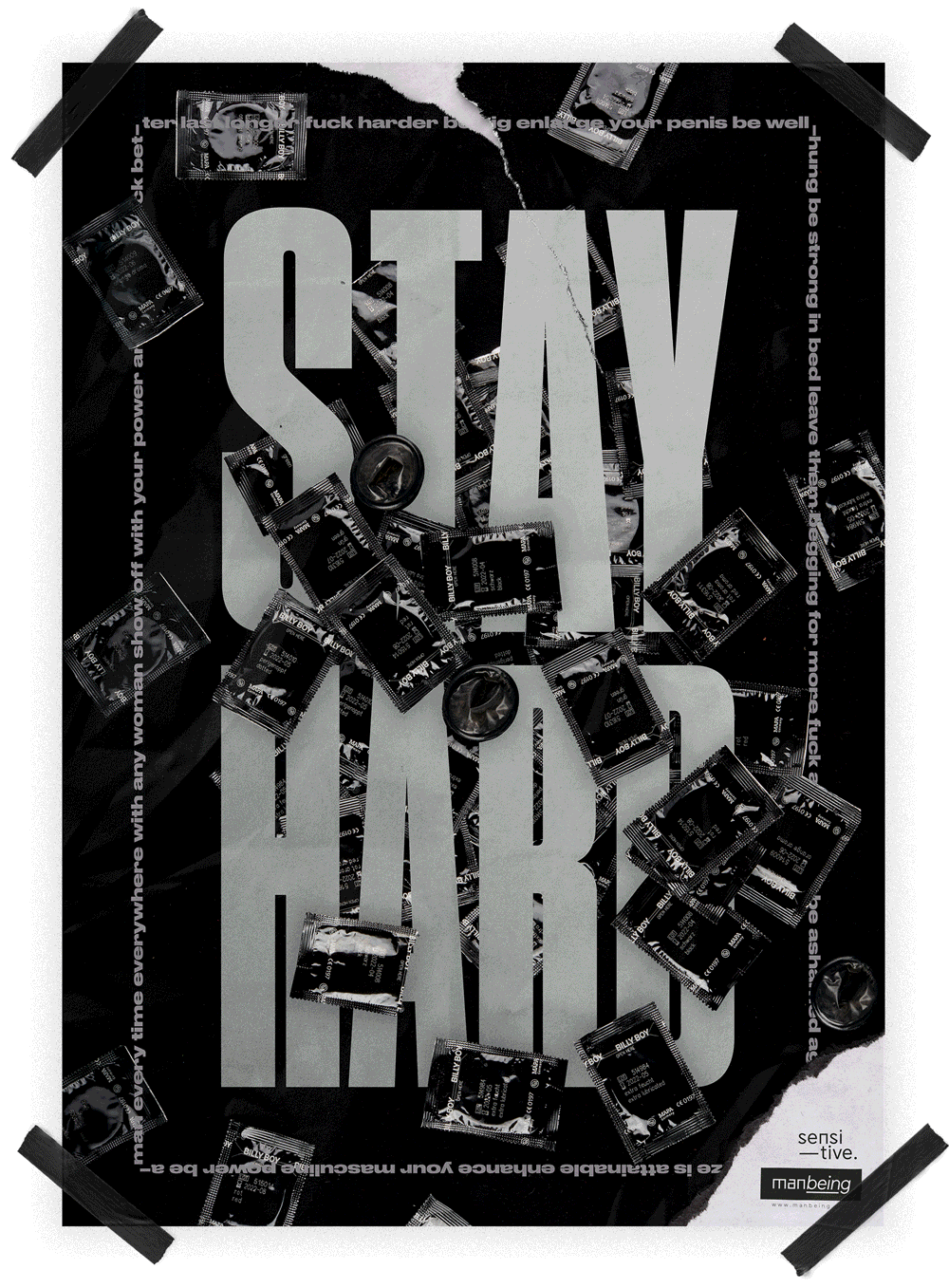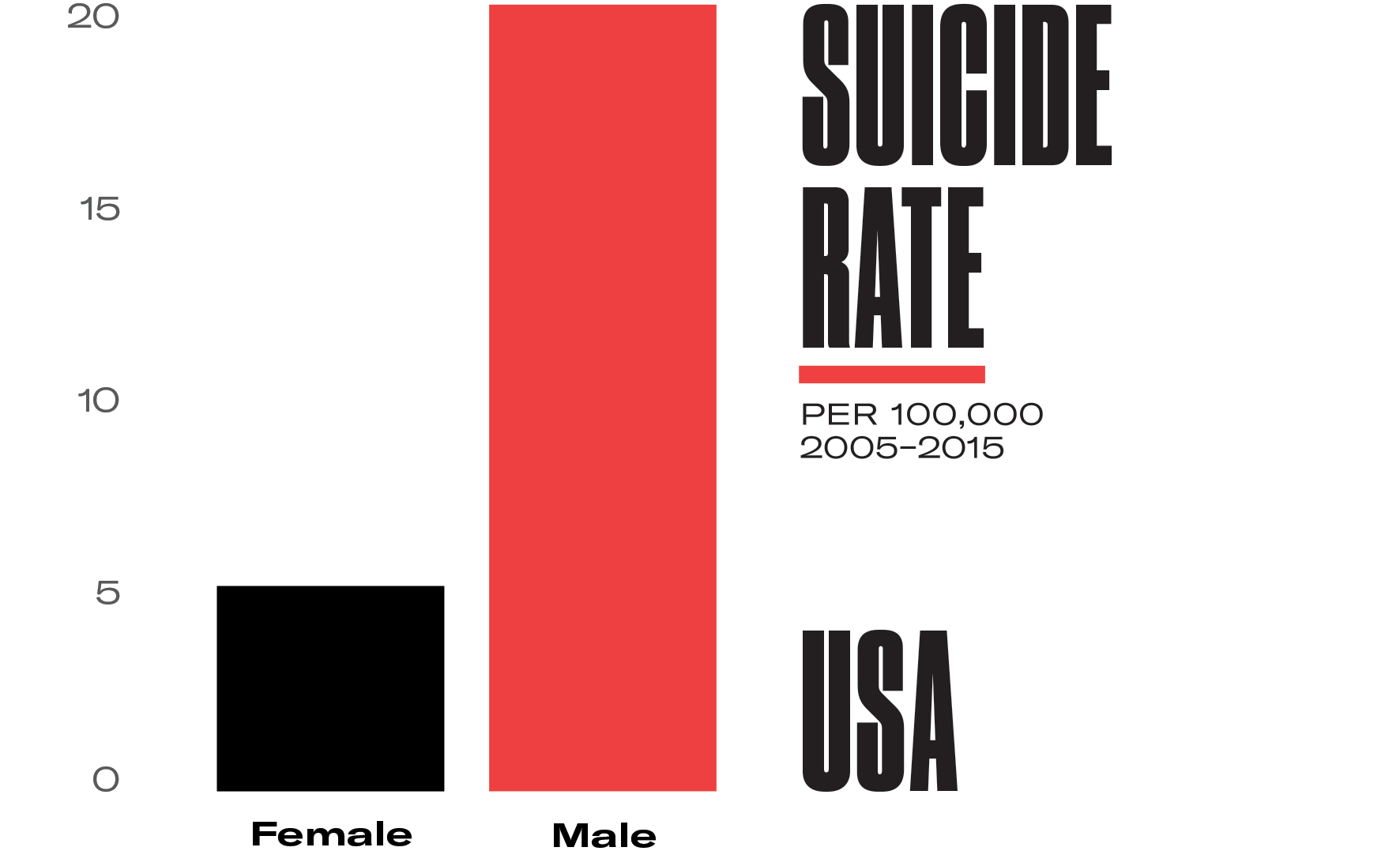Manbeing
A campaign for a healthier, more flexible masculinityBrief
Bachelor’s thesis and project
Disciplines
Concept, videography, photography, graphic design, web design, coding (HTML/CSS), sound design
Bachelor’s thesis and project
Disciplines
Concept, videography, photography, graphic design, web design, coding (HTML/CSS), sound design
How does one tackle a delicate social issue such as toxic masculinity, without appearing patronizing or alienating the target audience? I had no idea, but took a shot at it anyway.
My goal in my bachelor's project was to create a digital campaign, bringing awareness to the harmful parts of stereotypical masculinity.

Visit project website (desktop only)
The campaign
revolves around
a website.
The campaign revolves
around a website.
The website serves as a platform for personal, anonymous stories of men's* experiences with stereotypical notions of masculinity — how they've been hurt by them and how they've hurt others because of them. One can read, add their own stories, comment or send empathy to others. Essentially, it serves as an inclusive community, allowing its members to be vulnerable.
Supporting the
website is a video
based on one of many personal
stories the website hosts.
and a series of posters.
The posters are downloadable in full-size for
printing, allowing the audience to support the
campaign and spread word of it.

Wait. Explain.
Wait. Explain.
Ask Wikipedia what masculinity, or being a man is about, and it’ll give you a set of attributes that’s remained consistent over centuries in Western society: strength, courage, assertiveness, violence, providing and risk‑taking.
Femininity would be defined by gentleness, empathy, sensitivity, submisiveness and nurturance.
Thanks to feminist movement, what it means to be a woman has been becoming more flexible over the last few decades. While women* still face an abundance of obstacles, when it comes to their identity, they can look back to decades of conversation about the complexities of womanhood; the many forms it can take and the different ways to express it.
Men's gender roles, however, are not as dynamic. They are for the most part still trapped in an outdated, one-fits-all model of masculinity, where emotional expression is frowned upon, communication is emasculating and acknowledging weakness is a weakness in itself.
The world around them has changed, but most men have no role models who’ve adapted to it. With time, this has led some men to over-compensation in the form of violence and harmful behavior, directed both inwards and out (what is nowadays commonly referred to as toxic masculinity.)

Suicide rates in men are much higher than those of reported depression. This leads me to a sad conclusion: that men are encouraged to think taking their own lives is more noble than talking about their emotions.
In addition to the alarming statistics shown above, men comprise the majority of perpetrators in crimes such as murder, robbery, theft, sexual violence and rape. Men also drop out of high school more often, and are more likely to suffer from alcoholism, cancer or unreported heart disease (all of these in turn leading to many fatalities.)

Expanding
masculinity
Expanding masculinity
From this stems, for the good of all, that an open conversation must be had — challenging the rigid and stereotypical concepts that are putting lives at risk, allowing the expansion of the definition of masculinity to something much more flexible. This is the campaign’s goal.

Aesthetically
Aesthetically
My bachelor thesis,
My bachelor thesis,
written around the project, details the working process and the research and thinking that ultimately led to this solution.